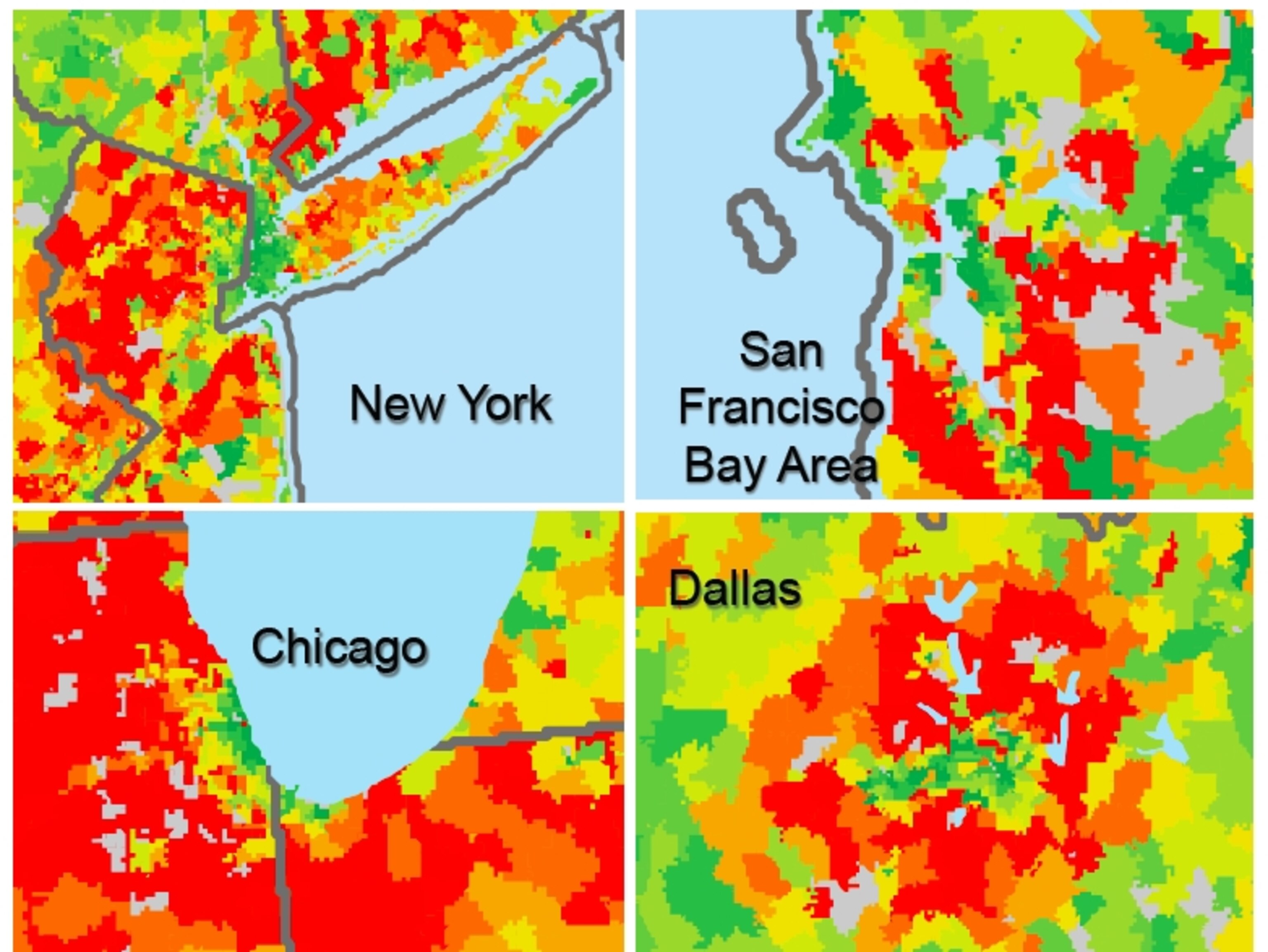California enacted its Global Warming Solutions Act (AB32) in 2006.
Since then, an entire network of interacting, mutually-reinforcing legislation has evolved in the state, historic in how the different measures support one another. A solar roof mandate (one million by 2020) augments an electric vehicle mandate (also one million in 2020), while both bolster a 2020 mandate for all residential properties to be “net zero energy.”
The sectoral policies in AB32 are driving much of the emissions reduction today, while the state ramps up its carbon cap-and-trade market, which has so far operated six emissions credit auctions. In 2010, a challenge to AB32 appeared, and it was defeated by a wide margin by California voters. Today, California is refining the elements of AB32, and planning the trajectory from where the state expects (and is on course) to be by 2020, namely back at the 1990 emissions baseline, to a 2050 target of at least 80percent below the 1990 emissions level.
Today, the state is soliciting views from a diverse set of stakeholders on next steps and program refinements as it updates
. The open, deliberative, and fact-based process that the state of California is pursuing through its agencies has become a global model for gaining shared understanding. In this effort we highlight and vociferously debate challenges, and ultimately and most critically, implement solutions.

Here are my recommendations for California’s next steps:
Recommendation 1: Expand Partnerships
This focus on climate leadership is not just a high-concept platitude. This is a critical observation. In my role as the Energy and Climate Fellow working for the U.S. Secretary of State, I can document that the California Global Warming Solutions Act is demonstrably inspiring communities, states and nations worldwide to innovate and act. This focus on an evolving AB32 process has brought investment in, and business opportunities to, California-based companies. (See our interactive cleantech jobs calculator.) California should expand the number and scope of state-to-state and international partnerships around climate solutions.
California’s interim targets under AB32 are vital to enabling and ensuring continuing use-inspired innovation that focuses talent on clear but challenging objectives. The climate imperative is getting more and more immediate and more and more costly. Witness the fires, droughts, crop failures, and other extreme weather events, as detailed by the American Meteorological Society, and the Intergovernmental Panel on Climate Change (IPCC), for which I have served as an contributor and as a Coordinating Lead Author since 1999. The clear message from these data is that we must maintain or accelerate our momentum to meet the state’s climate targets. The open letter to Governor Jerry Brown that I helped to author, and am proud to have signed with the Union of Concerned Scientists and a remarkable group of colleagues, highlights the increasingly dire climate data, and the vital and beneficial role that California’s proactive approach has taken to generating and profiting by solutions that AB32 had driven.
To enable accelerated learning and innovation (and profitable investment) around the interacting suite of climate, water, energy, job-creation and ecological innovations, my laboratory has built a series of electricity grid capacity expansion models called SWITCH (Solar, Wind, Integrated with Transmission and Conventional sources). These models are in use today in California, across the Western Electricity Coordinating Council, (WECC) in Chile and China, and under development for India, East Africa, and Mexico. We use the SWITCH model, a large linear program, to evaluate “what if” scenarios.
Recommendation 2: Set Interim Targets
To continue and expand our ability to build a climate-friendly, job-creating economy, interim targets in 2030 and 2040 are vital to streamline and focus the research and development efforts to feed the research, development, and deployment (RD&D) pipeline.
In particular, our analysis of the California and WECC energy system using the SWITCH model very clearly indicates that:
Extensive analysis with the SWITCH model bears out the benefits of this approach. The recently announced storage mandate for California is a perfect example of this process. The state should consider a series of system-level targets, such as those that incentivize both mobile (electric vehicle) and stationary storage capacity at California residences and businesses, and should identify opportunities for community and regional mini-grids that enhance supply reliability, cost certainty, and interact usefully with the IOU and municipal utilities across the state.
We find that California could meet its 2050 climate goals two decades earlier, in 2030, through a number of different technology-facilitated pathways. For each the cost is negligibly different from the Business as Usual cost forecasts. The key – which is difficult to achieve – is coordination between investments in energy efficiency, energy generation, and the construction of the transmission and distribution network needed to enable these systems. .
Recommendation 3: Engage Citizens
Citizen, community, and business engagement – indeed excitement over the steps and objectives — is vital to the sustainable energy and sustainable society process. We must focus on the means to make behavior change profitable and easy, and to build new partnerships that clarify and expand the benefits of a low-carbon economy to socioeconomically, ethnically, and other disadvantaged communities and individuals, and that make the business case for a sustainable economy clear to the private sector both in and out of California.
In a recent project supported by the California Air Resources Board, we have found that climate protection can lead to immediate economic and quality of life improvements. In the Cool California Challenge we have found that residential cost savings, improved air quality are only two of the immediate benefits that can come from attention and management of your carbon footprint.

You May Also Like
Go Further
Animals
- Soy, skim … spider. Are any of these technically milk?Soy, skim … spider. Are any of these technically milk?
- This pristine piece of the Amazon shows nature’s resilienceThis pristine piece of the Amazon shows nature’s resilience
- Octopuses have a lot of secrets. Can you guess 8 of them?
- Animals
- Feature
Octopuses have a lot of secrets. Can you guess 8 of them?
Environment
- This pristine piece of the Amazon shows nature’s resilienceThis pristine piece of the Amazon shows nature’s resilience
- Listen to 30 years of climate change transformed into haunting musicListen to 30 years of climate change transformed into haunting music
- This ancient society tried to stop El Niño—with child sacrificeThis ancient society tried to stop El Niño—with child sacrifice
- U.S. plans to clean its drinking water. What does that mean?U.S. plans to clean its drinking water. What does that mean?
History & Culture
- Gambling is everywhere now. When is that a problem?Gambling is everywhere now. When is that a problem?
- Beauty is pain—at least it was in 17th-century SpainBeauty is pain—at least it was in 17th-century Spain
- The real spies who inspired ‘The Ministry of Ungentlemanly Warfare’The real spies who inspired ‘The Ministry of Ungentlemanly Warfare’
- Heard of Zoroastrianism? The religion still has fervent followersHeard of Zoroastrianism? The religion still has fervent followers
- Strange clues in a Maya temple reveal a fiery political dramaStrange clues in a Maya temple reveal a fiery political drama
Science
- NASA has a plan to clean up space junk—but is going green enough?NASA has a plan to clean up space junk—but is going green enough?
- Soy, skim … spider. Are any of these technically milk?Soy, skim … spider. Are any of these technically milk?
- Can aspirin help protect against colorectal cancers?Can aspirin help protect against colorectal cancers?
- The unexpected health benefits of Ozempic and MounjaroThe unexpected health benefits of Ozempic and Mounjaro
- Do you have an inner monologue? Here’s what it reveals about you.Do you have an inner monologue? Here’s what it reveals about you.
Travel
- Follow in the footsteps of Robin Hood in Sherwood ForestFollow in the footsteps of Robin Hood in Sherwood Forest
- This chef is taking Indian cuisine in a bold new directionThis chef is taking Indian cuisine in a bold new direction
- On the path of Latin America's greatest wildlife migrationOn the path of Latin America's greatest wildlife migration
- Everything you need to know about Everglades National ParkEverything you need to know about Everglades National Park









